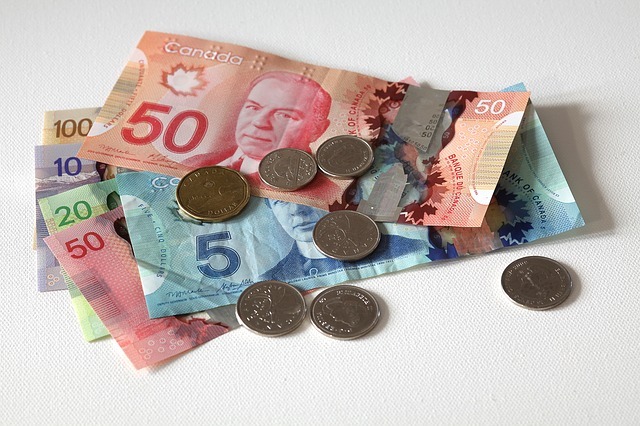In this article, we have covered the highlights of global market news about the Gold Prices, AUD/USD, USD/JPY and the Canadian Dollar.
Gold prices are in danger as FOMC wagers increase. U.S. retail sales could cause a crash.
During Wednesday’s New York trading, gold prices dropped under the 1,700 level, putting the yellow metal in danger of a potentially jarring decline. The US dollar and short-term Treasury yields were helped by the US inflation data, which also sent Federal Reserve rate hike bets soaring. The week will be concluded by the US retail sales report for August, which is due at 12:30 GMT on Thursday, and the September consumer sentiment report from the University of Michigan, which is due on Friday.
Those occurrences could be crucial for bullion prices because they will probably affect FOMC market pricing. A 100 basis point rate increase is one in four likely, according to Fed funds futures. If those odds rise, gold’s value as a financial asset will decrease. The Fed wants to achieve a soft landing, but it is more concerned with controlling inflation. However, a robust overall economy would mitigate the effects of higher interest rates. The FOMC would have more flexibility as a result.
However, a report on retail sales that was stronger than anticipated would probably be bad news for gold prices. Analysts predict that the headline figure will show a 0.1% decline from July, but that is only because gas prices are declining. The figure to pay attention to is one that does not include gasoline or vehicles. According to the Bloomberg consensus prediction, the price will rise by 0.5% from July. The initial Michigan consumer sentiment index is anticipated to increase to 60.0 on Friday from 58.2 in August. Inflation expectations are also covered in the survey, with estimates for the next year and the next five to ten years tracking at 4.6% and 2.9%, respectively.
Even if those economic prints come in below expectations, the most likely outcome after the CPI is a 75-bps Fed hike, which puts gold in a difficult position. Treasury yields will remain supported as a result, limiting the potential for price increases. Lower skew means that the path of least resistance. As the likelihood of a 100-bps rate hike rises, it is likely that XAU will decline. A bearish catalyst may be set off once Fed funds futures reach a 50% probability for the large price hike.
On the back of the jobs report, the AUD rose as investors anticipated RBA action. AUD/USD: Will it Rise?
After today’s jobs report, the Australian Dollar initially fell before surging, and the likelihood that the RBA will raise interest rates by 50 basis points at their next meeting in October slightly increased.
In August, the unemployment rate increased slightly from the previously reported 3.4% to 3.5%.
Instead of the 35k expected, the overall change in employment for the month was 33.5k. While there was a 58.8k increase in full-time employment, there were 25.3k part-time job losses in August.

As anticipated, the participation rate came in at 66.6%, up from the previous reading of 66.4%.
The incorrect reporting of the statistics by Bloomberg was the cause of the unusual price movement right after the number. Someone there could have a difficult day. The initial flash had zero jobs added but the unemployment rate was correct at 3.5%.
Japanese Yen Gained After BoJ Hinted Intervention, What Could this Mean for USD/JPY?
The Japanese Yen gained 1.08% against the US Dollar on Wednesday, which is a notable achievement given JPY’s persistent depreciation since 2021. What was the cause of this move? Reports crossed the wires that the Bank of Japan conducted a rate check, opening the door to market intervention for the first time since 1998. Traders were spooked. Should they be?
Prior to this event, various Japanese government and monetary policy officials have been offering verbal jabs against the currency for some time. There was no physical activity. The BoJ continues to be in a very different position from its major peers at the end of the day. The central bank keeps up its ultra-loose monetary policy, which includes negative interest rates, ongoing quantitative easing, and yield curve control.
Nearly every other significant central bank has tightened policy in the interim. The Japanese Yen is probably under pressure due to this widening gap between them and Japan. To understand the story, all you need to do is look at the yield spreads on government bonds. The action on Wednesday might have been viewed as the next step by officials in their efforts to control the Yen.
Funny enough, a push for intervention could also be interpreted as a sign that the Bank of Japan might keep policy loose. Former board member Goushi Kataoka mentioned that at the earliest, a BoJ policy shift might come by the middle of next year. It seems that in the interim, the government may have to use other measures to help hold up the Yen.
Canadian Dollar Technical Analysis: CAD/JPY, USD/CAD Rates Outlook
The Canadian Dollar has turned lower over the past few days, in line with risk appetite more broadly. Rapidly rising Fed rate hike odds have pushed up the US Dollar (via the DXY Index) and US Treasury yields, while proliferating global recession concerns have weighed on energy prices. The net-result has been that USD/CAD rates are pushing their yearly highs, while CAD/JPY rates have dropped to their lowest level in over a week.

In the prior note at the end of August, it was observed that “continued deterioration in US equity markets, noted by rising US 2-year yields and an elevated VIX, could help pave the path for USD/CAD rates to retest their yearly high above 1.3200 in short order.” Since then, including today, the pair has traded above 1.3200 on occasions, but has not yet reached the yearly high at 1.3224. Having broken above ascending triangle resistance that’s been forming since April, the near-term bias appears to be to the topside.
Please click here for the Market News Updates from 13 September 2022.


